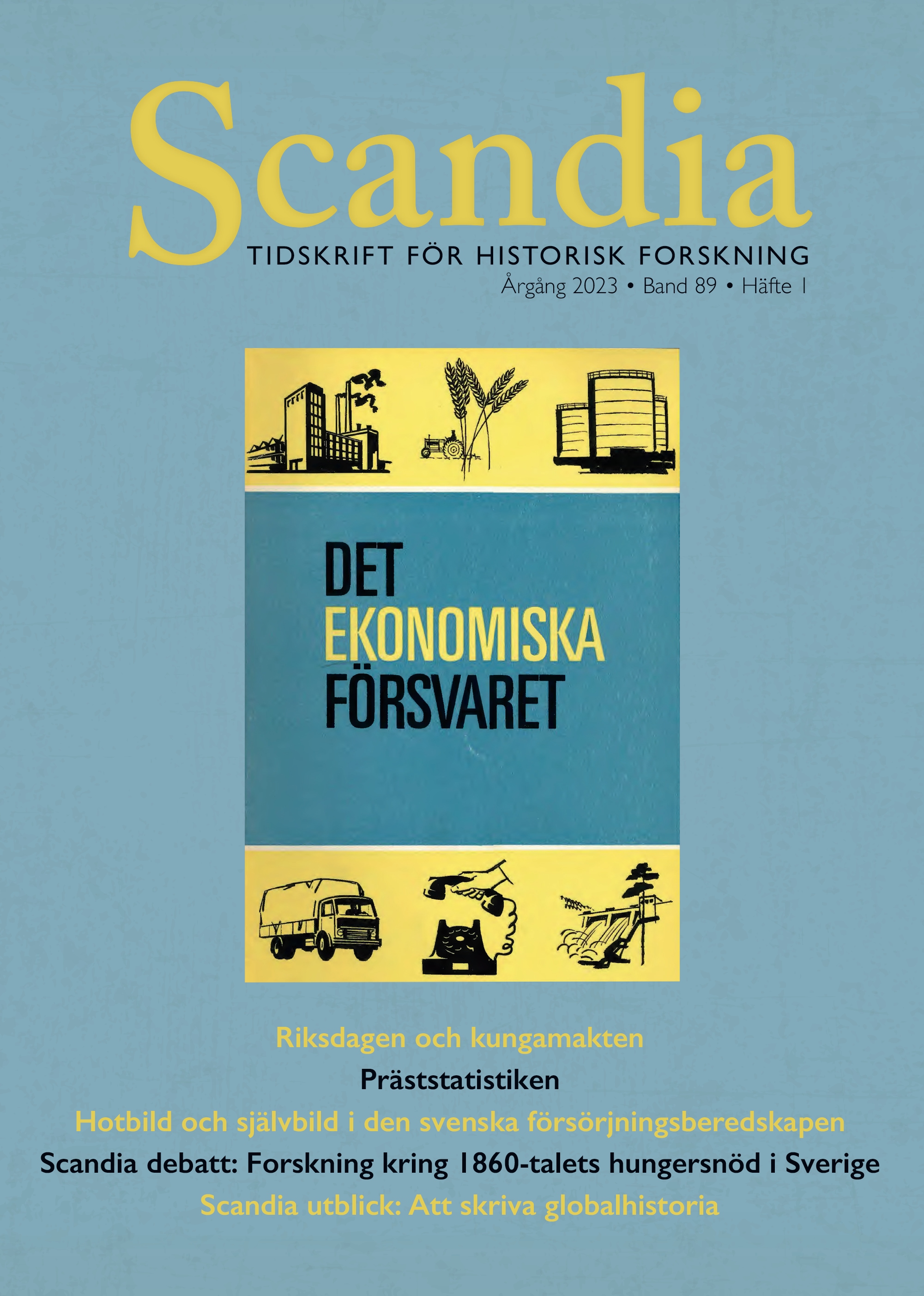To Reach ”the most probable probability; if not quite capturing the truth”: On the ”Clerks’ Statistics” 1802– 1820, the Oldest Agricultural Statistics in the World
DOI:
https://doi.org/10.47868/scandia.v89i1.25208Keywords:
agricultural statistics, history of statistics, agricultural history, cadastral maps, historical databasesAbstract
Sweden probably has the oldest series of agricultural statistics in the world. As early as 1802 and onwards, the rectors were tasked with continuously providing information on seed, area, harvest and livestock at the parish level. However, the statistics have been considered unreliable by researchers, who have instead turned to higher quality sources, albeit more time-consuming to process: probate inventories, church records and land surveying acts. Beginning in the 1940s, such material has increasingly been used in microstudies. However, the digitization of these materials has paved the way for large-scale approaches, as it is possible to compile data for the entire country. As a result, 19th-century agricultural statistics are now being revised.
This article presents the project Arable land in Sweden 1810 and 1870. Close to 9,500 land surveying acts were used to reconstruct acreages at the local level throughout Sweden around 1810 and 1870. Information on livestock numbers and annual yields was obtained from other projects. While the new set of data certainly opens up for studying a variety of issues regarding the agricultural revolution, the purpose of the paper is limited to the statistics themselves. What do the revised statistics say about the original series?
A surprising result is that official figures were better than expected. Researchers have come to assume that about half of all arable land was left out of the statistics around 1810. According to the project, the underestimation is down to one-third. There were large regional variations. In the grain-producing eastern provinces, more arable land was missing than in the cattle-raising west. However, the pattern was the reverse for cattle. Regional shifts in the misrepresentation of true conditions illustrate the underlying bias in the material. The rectors responsible for the collection relied on information from the farmers, who, due to a fear of increased taxes, submitted figures that were too low. In addition, the article demonstrates how ignorance and obscure instructions contributed to further shortcomings. The final section discusses the rationale behind the agricultural statistics. Arguably, the collection of data was motivated by a search for knowledge per se and not by any practical attempt to improve the national food supply or expand the tax base.





